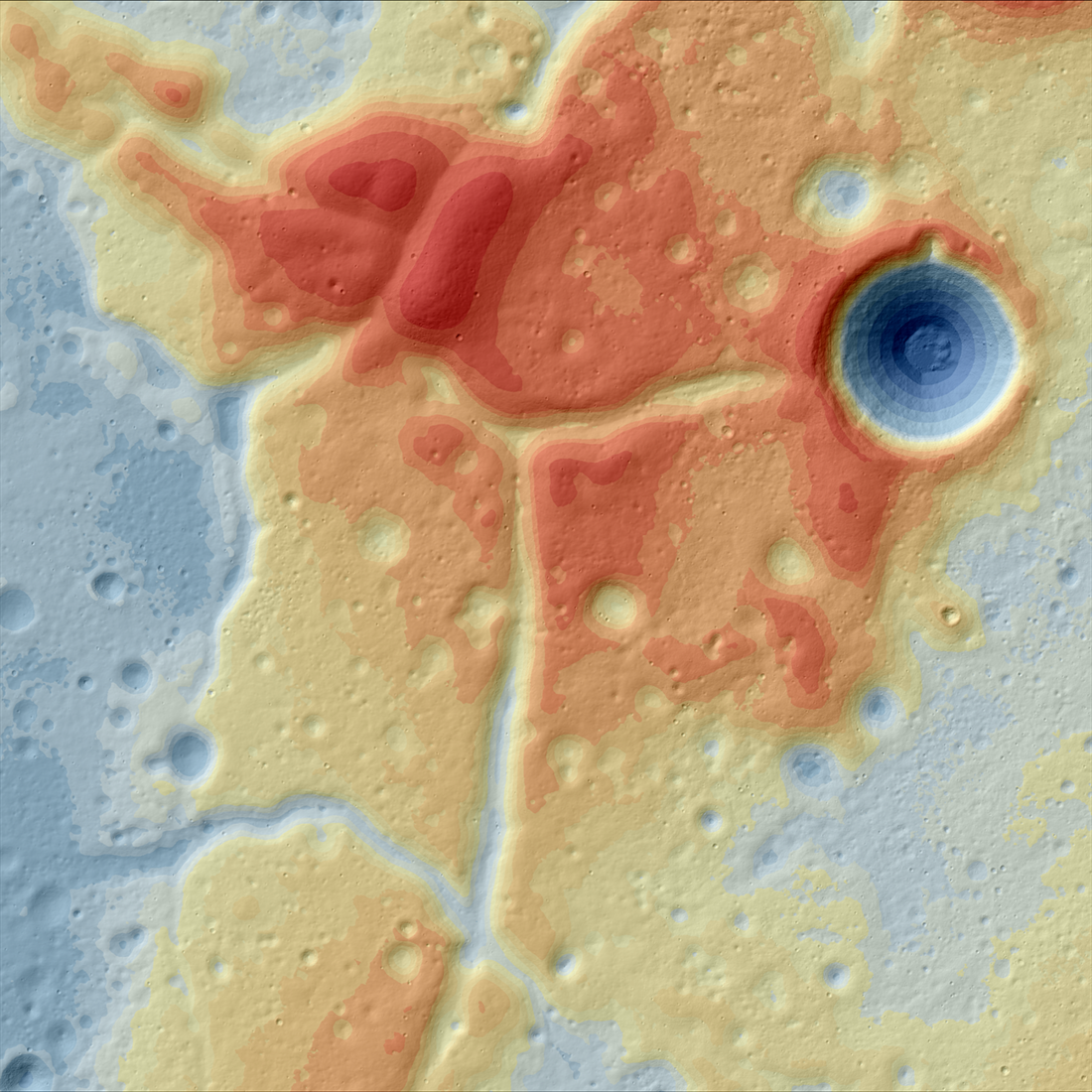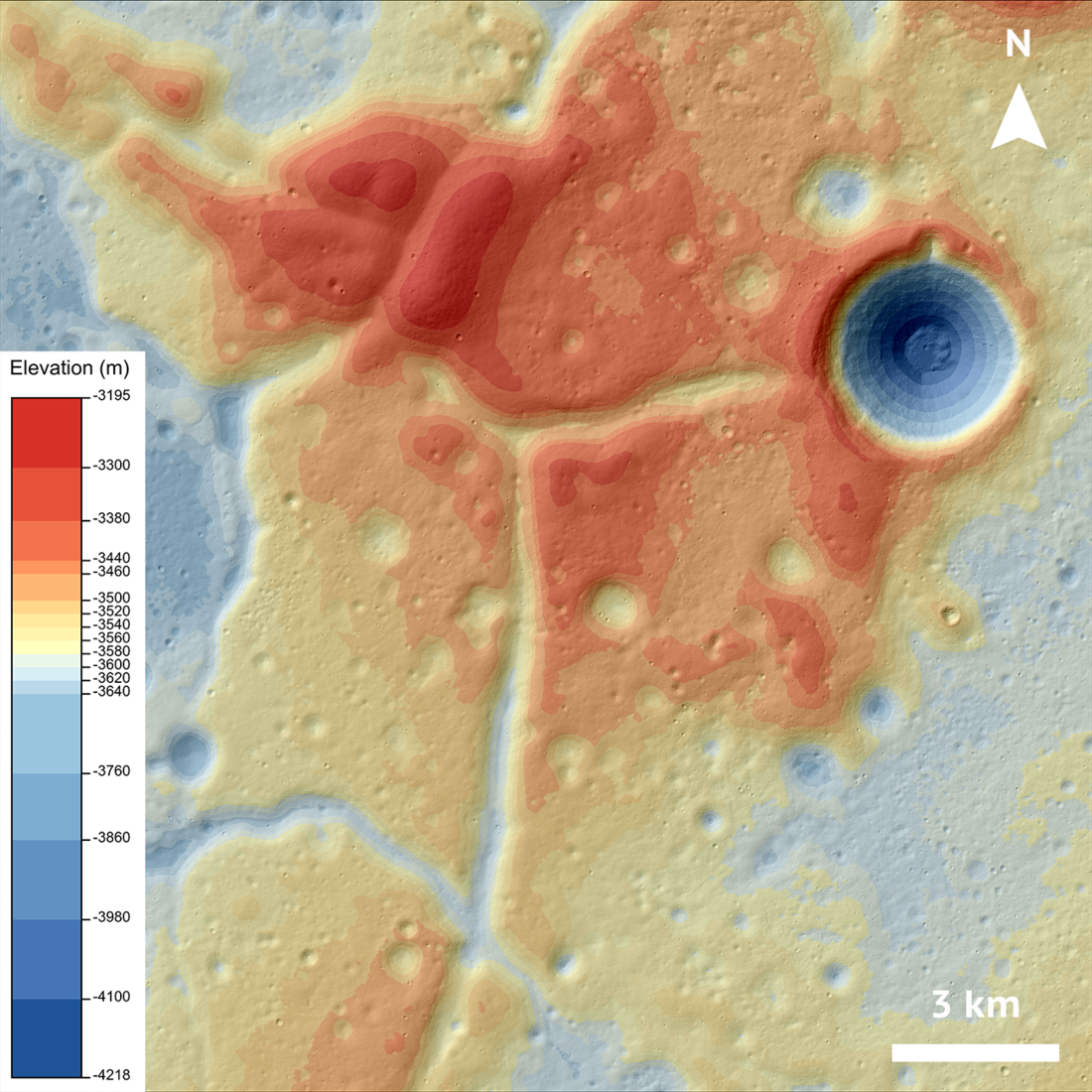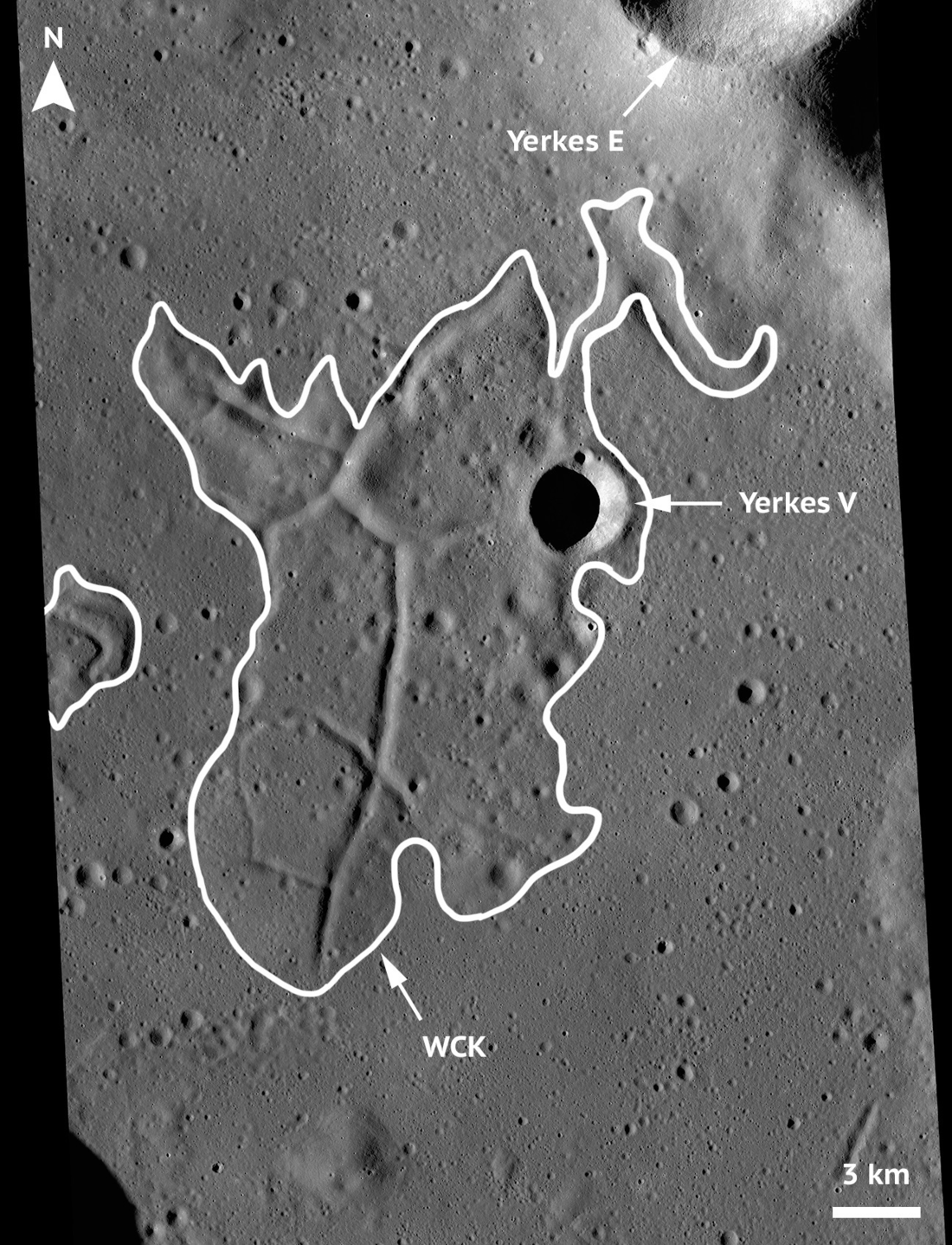
We typically think of islands as pieces of land surrounded by water, but by replacing that water with lava, you can get what is known as a kipuka. Kipukas, a Hawaiian term for an older pocket of land surrounded by younger lava flows, are present on the Earth as well as on the Moon. The topographic model below shows a feature thought to be a kipuka, the Western Crisium Kipuka (or WCK), located in Mare Crisium. The yellows, oranges, and reds show that it is higher in elevation than the surrounding area, with lower-lying fractures crisscrossing its surface.

In recent studies of this and other kipukas in the Mare Crisium region, scientists proposed two different origins for these islands of older material. One study suggests that the impact that formed the Mare Crisium basin was enormous and had enough energy to melt the material inside the crater, creating what is known as impact melt. After this material cooled, magma from the interior was emplaced underneath the surface, resulting in an area of high elevation. Lava then flowed into the basin, burying all but the highest points, which resulted in these Mare Crisium kipukas.
Another study suggests that rather than originating from impact melt like some of the other kipukas in the Mare Crisium region, the WCK specifically resulted from post-Crisium volcanism. While the kipukas in the northern and eastern areas of Mare Crisium seem to be composed of melted highland rock, the ejecta from impact craters superposed on the WCK has a composition closer to that of basalt, a volcanic deposit that makes up the lunar mare.

While the origin of the WCK is still being debated, both studies agree that it was uplifted by magma emplaced from below. They even relate this process to that of floor-fractured craters; in fact, we see similar large fractures covering the WCK. These fractures form because when the WCK was uplifted, the tension in the surface caused it to crack, similar to cracks that form when bread rises in the oven.
This feature must be older than the surrounding mare to truly be a kipuka. Perhaps if astronauts were to visit this area during a future mission, they could collect samples to determine the age of the features and use the presence of these fractures and the raised surface to identify where the lunar mare ends and the kipuka — if it even is a kipuka — begins.
Explore the WCK and its fractures in the Zoomify window below!
Related posts:
Published by Melissa Thomas on 1 April 2024